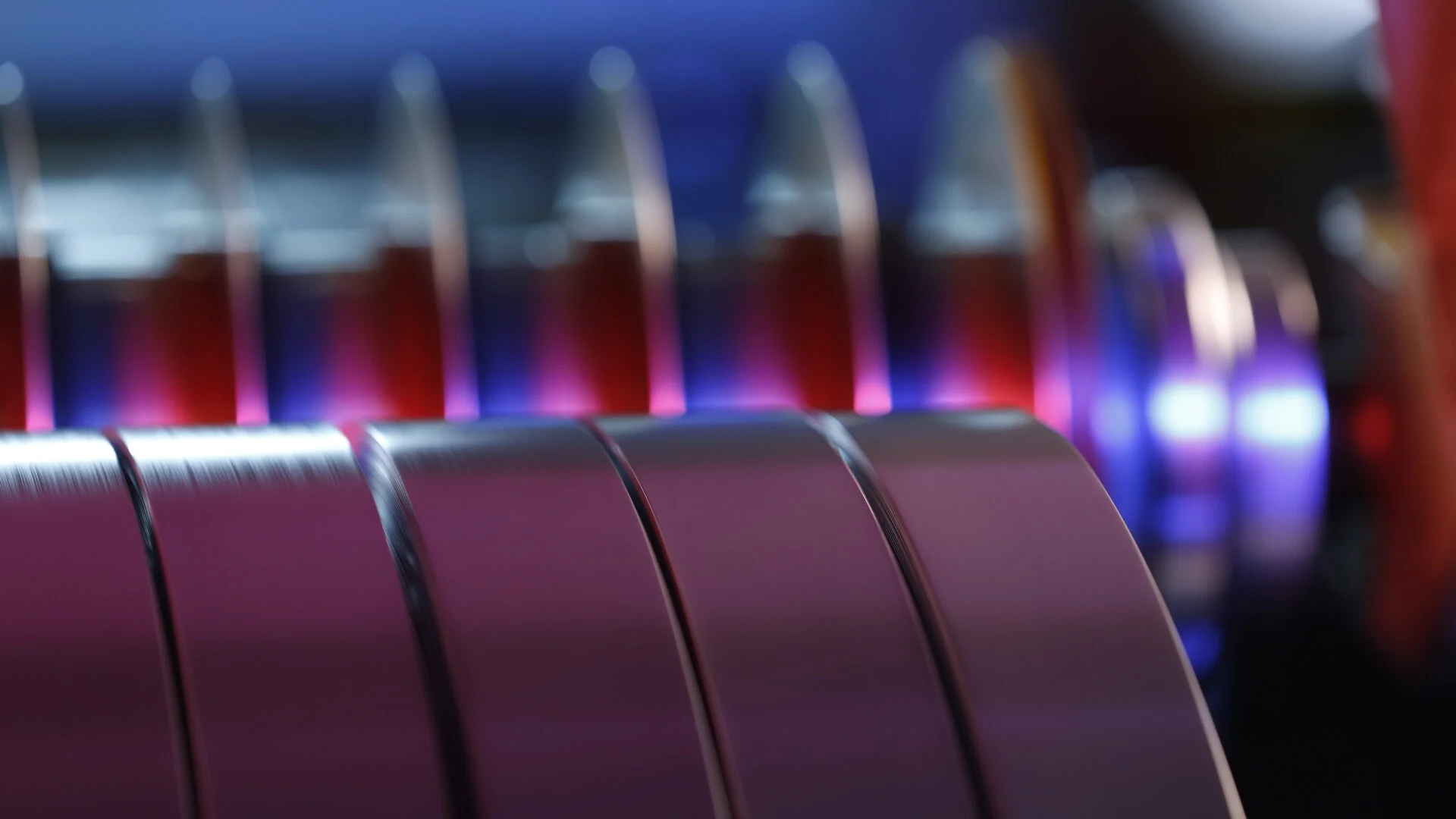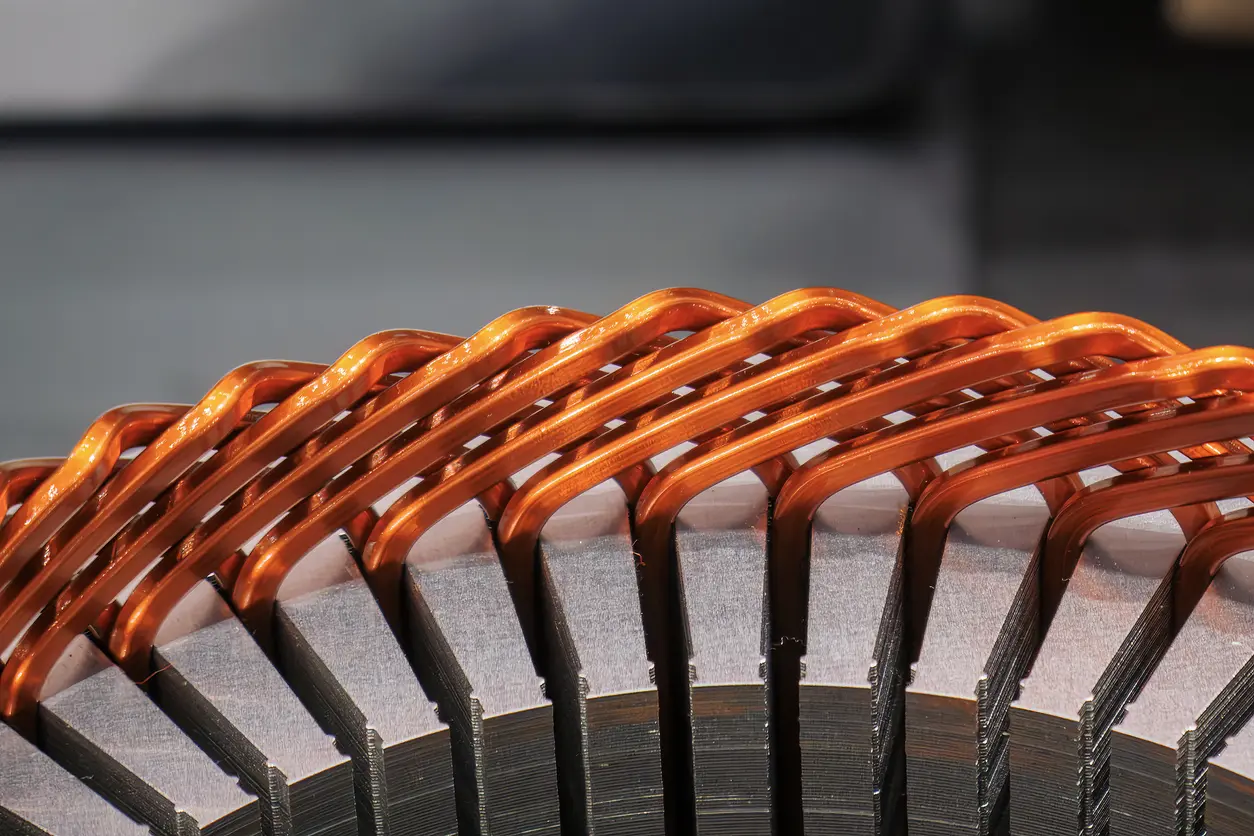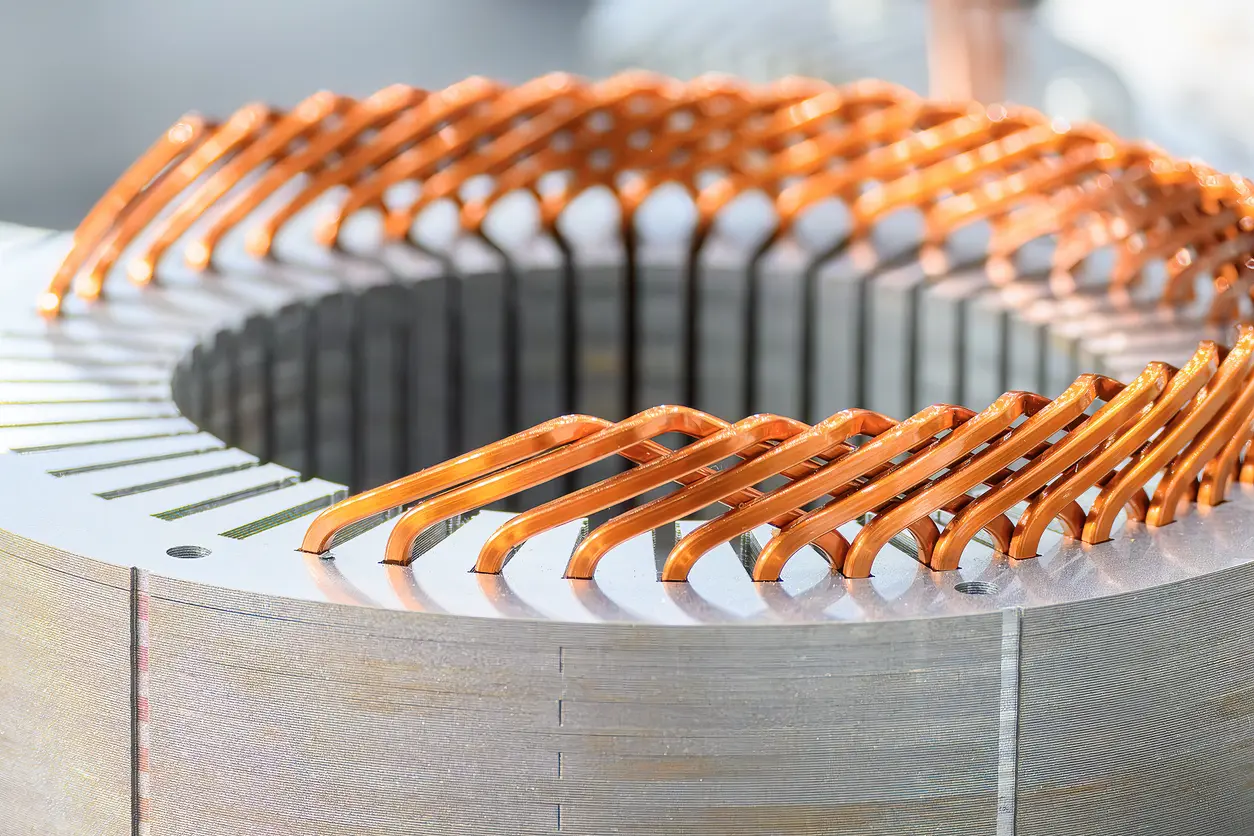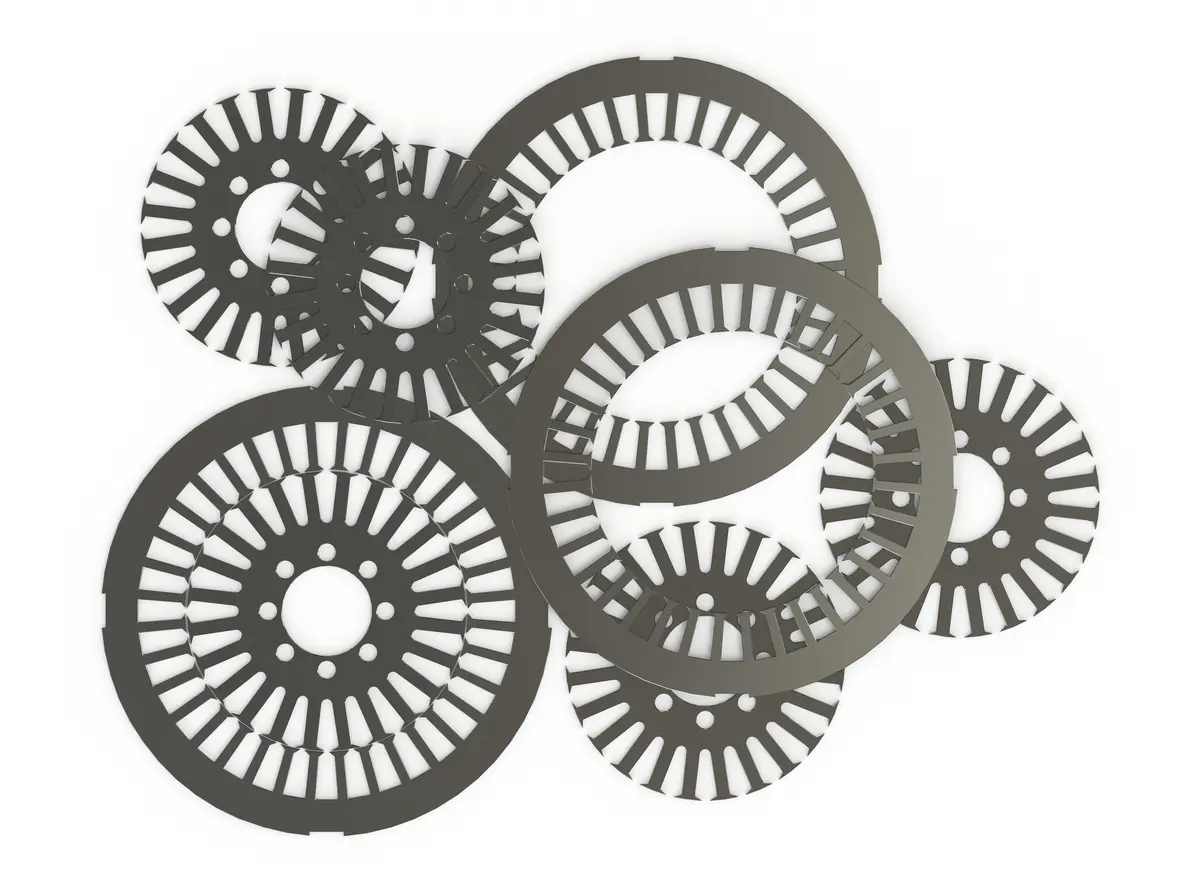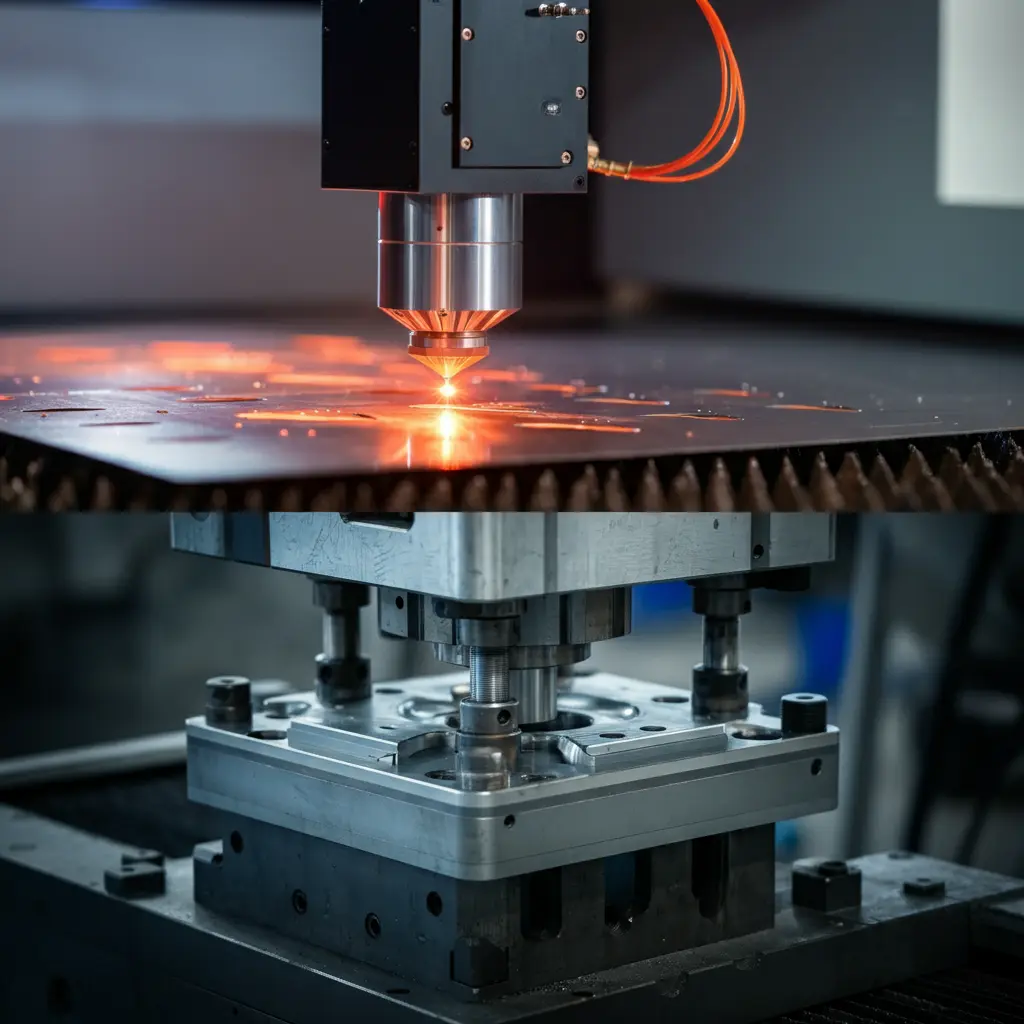Introduction
Electrical steel, the backbone material for electric motor cores, comes in various grades designed to optimize performance based on specific application needs.
These grades differ in thickness, typically ranging from ultra-thin laminations (around 0.15 mm) to thicker laminations (0.50 mm or more), each impacting crucial performance metrics such as core loss and magnetic flux density. Choosing the right grade involves balancing factors like efficiency, performance, and cost-effectiveness, with higher-end materials generally delivering lower core losses and improved magnetic characteristics at a higher but worthy cost.
A particularly innovative feature in electrical steel is the self-bonding capability, a built-in adhesive layer applied to the steel surface that activates under controlled heat and pressure. This advanced bonding solution eliminates traditional bonding methods, such as riveting or welding, thereby significantly enhancing the structural integrity of laminated motor cores, streamlining manufacturing processes, and ultimately contributing to higher-performance motors with reduced operational losses.
Positive Impacts of Self-Bonding Selection Feature
Selecting self-bonding electrical steel significantly enhances the structural integrity of the laminated core, providing a more robust, uniform, and stable construction compared to traditional methods. By eliminating the need for mechanical interlocking such as riveting, fewer physical connections between each laminated sheet result in fewer potential paths for eddy current losses.
This reduction in potential loss pathways is particularly crucial at higher operating frequencies, where even minor disruptions in the magnetic circuit can significantly degrade motor performance. Additionally, reducing side welding notably minimizes eddy currents by preventing fusion at the steel edges, which otherwise would create irregularities and distortions in the material’s magnetic properties.
Beyond minimizing electrical losses, avoiding these welding-induced distortions also preserves the original magnetic characteristics of the steel, optimizing the magnetic flux density throughout the core. Consequently, these combined improvements contribute directly to greater operational efficiency, significantly enhancing motor performance and reliability, and allowing electric machines to operate smoother, cooler, quieter, and with notably reduced energy losses over their operational lifespan.
Contribution of the Self-Bonding Feature to Electric Motors
From the perspective of electric motor performance, adopting self-bonding electrical steel compared to non-self-bonding materials of the same grade brings substantial and multifaceted benefits. Primarily, the enhanced structural integrity offered by self-bonding significantly reduces operational noise, typically lowering it by 10-15 dB. This marked reduction in noise not only improves user comfort but also facilitates compliance with increasingly stringent global noise regulations, making the technology highly suitable for consumer-sensitive applications such as electric vehicles, household appliances, and precision medical devices.
Moreover, the self-bonding adhesive material has demonstrated remarkable durability and resilience, successfully withstanding rigorous heat cycles, intense vibrations, and acceleration tests extending beyond 20,000 hours, thus confidently meeting and often exceeding the demanding reliability standards set by major automotive manufacturers.
Additionally, integrating self-bonding technology into electric motors notably enhances their performance characteristics, significantly boosting maximum efficiency, increasing peak power output, and raising available output torque. Furthermore, it substantially improves operational parameters such as the proportion of high-efficiency operating areas and broadens the rotational speed range of these high-efficiency zones, thus enhancing the motor’s operational flexibility and performance consistency. Collectively, these advanced characteristics firmly establish self-bonding electrical steel as an exceptional choice for next-generation high-performance electric motor applications.
Conclusion
In summary, self-bonding electrical steel represents a transformative advancement in electric motor technology. Its unique capability to improve structural integrity, reduce operational noise, and withstand rigorous operating conditions makes it exceptionally advantageous for high-performance applications. By significantly mitigating eddy current losses and enhancing efficiency, self-bonding electrical steel directly contributes to superior motor performance and reliability. As industries increasingly demand higher efficiency, quieter operation, and longer durability from their electric motors, adopting self-bonding electrical steel emerges as a pivotal step toward achieving these ambitious objectives.

